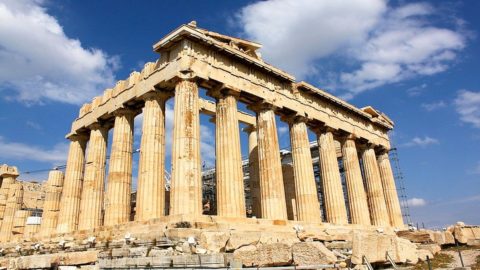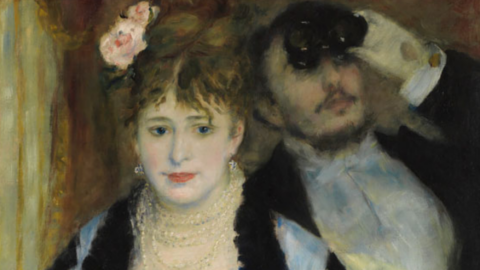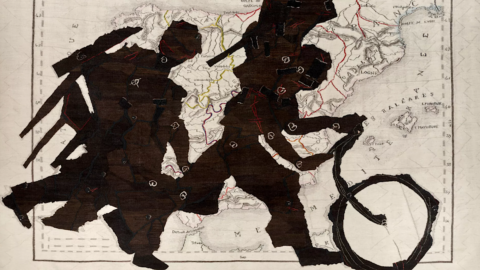Example of timeless beauty, the Parthenon exerts a suggestion that, even this, seems to last forever. Its ruin due to wars and barbarism still arouses great pain while the dispute over the ownership of its finds scattered outside Greece is the source of endless debates. His downfall however, as we read in the book by Marta Boneschi entitled The shipwreck of the Mentor. The Parthenon Marbles and the War for the Domination of Europe, published by Luiss, is also the fruit of a great love, of a furious passion for ancient art: in the early nineteenth century Lord Elgin stripped the temple to save the most valuable pieces by bringing them to London. He was convinced of it. Little known is the story of how a part of the Parthenon marbles, taken from Elgin, sank in the Aegean Sea during a storm at the end of the summer of 1802. It is a story of adventures and misadventures, which involves the most illustrious personalities of the time, in addition to Elgin: from Admiral Nelson to Sultan Selim III, from the sculptor Antonio Canova to the poet George Byron, from Napoleon to the beautiful Emma Hamilton. Was Lord Elgin right? Are those marbles stolen or saved? Who owns the finds from the Acropolis of Athens? The reader will form an opinion after having explored this very intense chapter in the history and history of European art.
It begins like this The shipwreck of Mentor. The Parthenon Marbles and the War for the Domination of Europe:
«The clear sky above the Piraeus and the still sea invite the brigantine Mentor to move away from the port to anchor at anchor. It is the afternoon of 15 September 1802 when the captain orders the manoeuvre. At forty-two years mostly spent sailing, Scotsman William Eglen knows the vagaries of the Aegean Sea, as well as those of its North Sea, the Atlantic Ocean and other seas he has traversed. At the command of Mentor he has furrowed several times that restless body of water between Anatolia and Greece, full of islands and windswept in every season of the year.
The brigantine remains at anchor during the night. The next day, September 16, at sunrise he raises the sails and puts out into the deep. From the pier, Giovanni Battista Lusieri sees it glide on the water, getting smaller and smaller. Don Tita - so it is known - was Roman by birth and a landscape painter by profession. His tall figure, deep black eyes, thick mustache and unmistakable goatee beard are well known in Athens, where he has lived and worked for a couple of years now. For almost three years he has been in the master's service Mentor, Thomas Bruce, XNUMXth Earl of Elgin, XNUMXth Earl of Kincardine, HM George III's Ambassador Plenipotentiary to the Sublime Porte. On behalf of the great figure esteemed by the Turks and disliked by Napoleon, Lusieri takes care of the marbles, the works of art of the Acropolis, Athens and other places in Greece torn from their place of origin and piled up in the port, closed in dozens and dozens of wooden crates, waiting to embark on the journey to the British coast.
With the company Mentor another load has left, seventeen crates, a minimal part of the great treasure that has been making up Lord Elgin's collection for over a year, but a maximum amount of space for the small brig. Don Tita takes a load off himself, late, and he can't forgive himself for this, even though he has done his best to avoid it. Hurry, hurry, Lord Elgin wrote to him almost every day, detained in Constantinople by his duties as ambassador. Those treasures must be evacuated, removed from Ottoman Greece, they must reach Malta, a British possession which will soon be ceded to the French, according to the dictates of the peace of Amiens, and can no longer be used as a base for British transits.
Don Tita sets aside in a corner of his mind the troubles that have delayed the departure of the Mentor: Captain Eglen's refusal to take on board the too long crates, those containing the fragments of the frieze of the Panathenaic, a delicate work by Phidias which illustrates the festivals in honor of Athena which were held every year between July and August; the disgruntled and riotous crew; malaria lurking, not to mention the anxiety generated by Lord Elgin's peremptory and threatening letters, but also by the suspicion of being spied on by French agents, ready to hinder shipments or even get their hands on the marbles. And then the coming autumn, the bad season which reduces sea voyages.
That's enough, the brig slips on the waves of the Saronic gulf, it will not return to Piraeus for a long time. […]
Throughout the day of September 16 the Mentor it is kissed by the lucky star, the weather is stable, the wind is friendly. Rounding the cape without a hitch, he enters the Strait of Cerigo (ancient Kythera) and at six in the afternoon of that clear and calm day he sees Cape Tenaro which stretches barren, like a finger pointing over there, as distant as it is invisible, the African coast of Cyrenaica. It is from there, from a cave on Tenaro, the ancients were certain, that one enters Hades, the realm of the dead.
At dusk, however, a bad wind rises which changes direction almost every hour, then a violent mistral winds the waves on the deck, the ship takes on water and when it gets dark the Mentor, which is overloaded, becomes unmanageable. As happened to Menelaus, the "howling winds" push him forty miles southeast and spill so much water onto the deck that two diligent sailors empty it in turn, but without appreciable results. It is a storm and seems invincible, angry Poseidon does not forgive.
Tossed and soaked, the passengers and crew endure a night of tremors and fears until, on the morning of September 17, Eglen notes that the weather conditions show no signs of improving and, indeed, the wind picks up. He therefore accepts the suggestion of Manolis Malis, the Greek pilot: before sinking or, in the best case scenario, being pushed who knows where, towards Crete or towards Africa, perhaps as happened to Ulysses for nine days, it will be better to aim for the port closer. In Cerigo, Malis suggests, the Cythera also sighted by the Achaean hero, the island south of Cape Malea where the port of San Nicolò offers shelter, overlooking an inlet facing south-east, protected by the mountain of Aghios Georghios and perhaps by the saint himself.
The mistral did not subside. The captain orders the two anchors to be dropped under the octagonal fort of San Nicolò, which the Greeks call Kastello, built a long time ago by the Venetians. Already the crew and passengers, tossed in the waves, tried by seasickness and sleepless nights, anticipate the certainty of dry land. But no, the mistral launches a series of unexpected gusts. One after another the anchors tear off the lines under the unusual strength of the wind. “Resume the deep sea immediately!” orders Eglen, towards a more sheltered anchorage, and the Mentor returns to the mercy of a furious sea. The cruelty of the storm wins over the captain's expertise. Under the eyes of the inhabitants of San Nicolò, the brigantine is dragged towards the low, rocky moor which closes the bay to the east, and pushed against the rocks on the surface of the water, with the hull torn open on one side, sinks in a few minutes at a depth of twenty meters. In the middle of the afternoon, del Mentor lying on the seabed, only the top of the mainmast sticks out».





